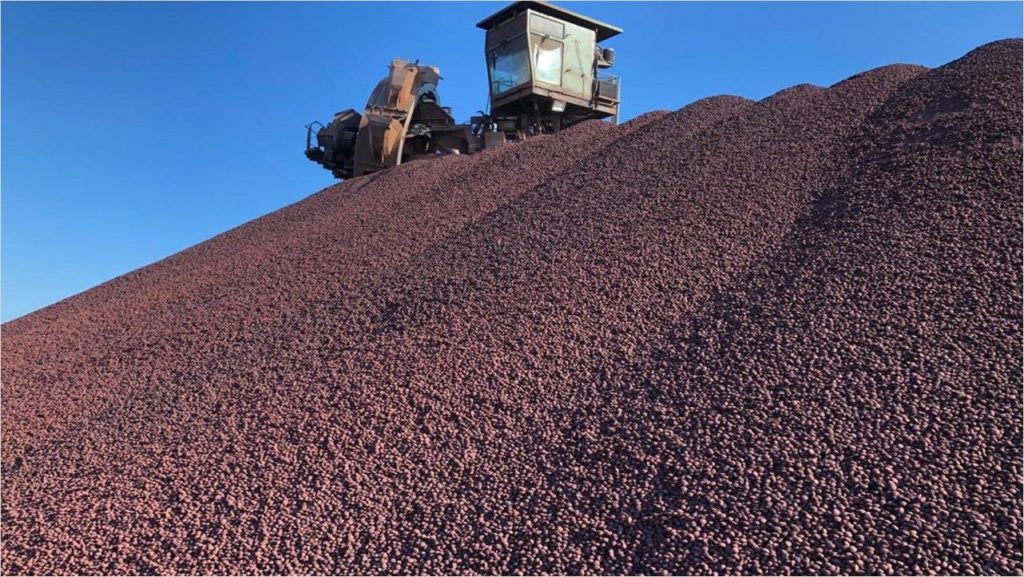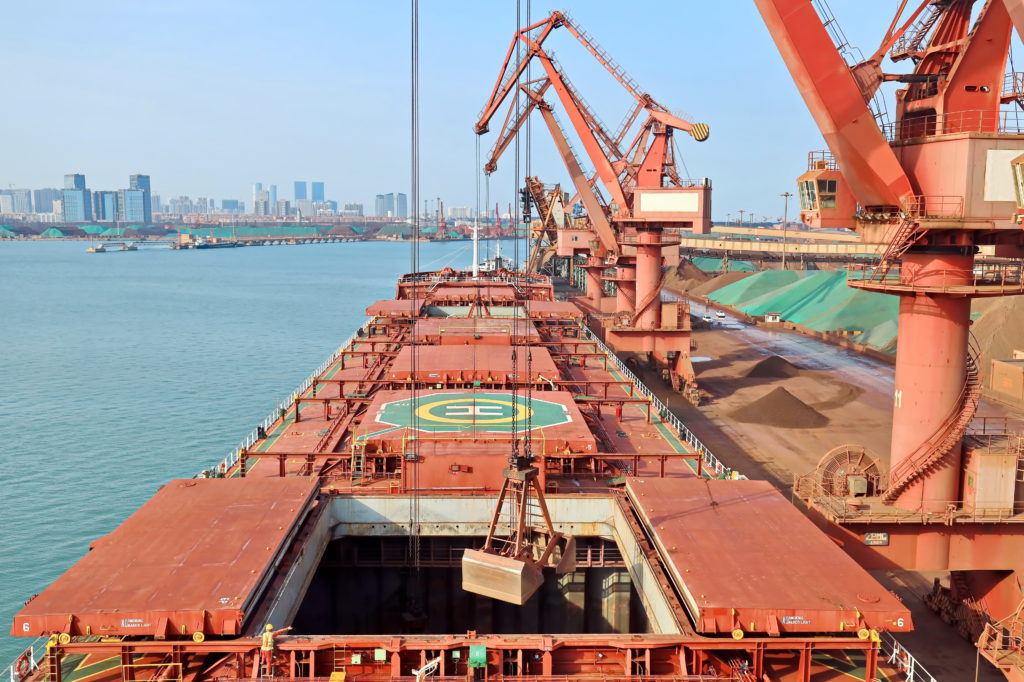Iron ore price set for second weekly loss as tariff turmoil weighs
Reuters | April 18, 2025 |

Iron ore briquettes stockpile. Credit: Vale
Iron ore futures slipped on Friday and were headed for a second weekly loss weighed down by the lingering Sino-US trade tensions, but resilient demand, upbeat economic data and hopes of more stimulus from top consumer China cushioned the fall.

The most-traded September iron ore contract on China’s Dalian Commodity Exchange (DCE) dropped 1.76% to 699 yuan ($95.80) a metric ton, its lowest since April 11. It registered a weekly drop of 0.7%.
The benchmark May iron ore on the Singapore Exchange fell 0.88% to $96.95 a ton as of 0706 GMT, posting a 0.2% decline so far this week.
Even as US President Donald Trump signalled a potential end to the tit-for-tat tariff hikes between the US and China that shocked markets, all eyes are on more progressive signs of easing trade tensions between the two superpowers.
Goldman Sachs analysts forecast iron ore prices to fall to $90 by the fourth quarter and $80 by the fourth quarter of 2026, citing a return to surplus from the second half of the year.
“We expect tariffs to weigh on both China domestic demand and steel exports over the remainder of the year,” they said, lowering their ex-China seaborne ore demand growth forecast to 3% from previous 5%.
But near-term ore demand remained firm, limiting price loss. A Mysteel survey showed average daily hot metal output, a gauge of iron ore consumption, steadied at a nearly 17-month high of 2.4 million tons on Thursday.
Also, a raft of better-than-expected Chinese data, coupled with hopes of Beijing unveiling more measures to counter the US tariff shocks, boosted sentiment.
Other steelmaking ingredients on the DCE languished, with coking coal and coke down 0.68% and 0.35%, respectively.
Most steel benchmarks on the SHFE retreated. Rebar lost 0.81%, hot-rolled coil dipped 0.66%, stainless steel fell 0.62%. Wire rod advanced 0.48%.
($1 = 7.2961 Chinese yuan)
(By Amy Lv and Lewis Jackson; Editing by Sumana Nandy)
Iron ore miners in rocky start to year as tariff turmoil begins

The world’s biggest iron ore miners face a difficult start to the year, after extreme weather impacted production and as their biggest customer China braces for a trade war.
This week, BHP Group Ltd., Rio Tinto Group, and Vale SA all reported drops in quarterly shipments from the year before, the result of disruptions from cyclones in Australia’s Pilbara and heavy rains in northern Brazil. Rio was worst affected, with exports slumping 9% to a six-year low.
That leaves the companies needing to play catch-up on their supply targets at a time when escalating tensions with the US could wreak havoc on the Chinese economy. The question now is whether Beijing will deliver enough stimulus to support demand for steel and its inputs, of which iron ore is key.
“We might see a recovery phase where these companies ramp up production to compensate for the lost output,” said David Cachot, an iron ore research director at Wood Mackenzie Ltd. “Market participants are waiting to see what Beijing will do to further stimulate its economy, an additional source of concern the country did not need.”
Market dives
Before the supply disruptions hit and trade tensions ratcheted higher, the iron ore market was contending with a surge in supply just as demand in China’s maturing economy was dwindling. Still, benchmark iron ore futures in Singapore were steady, averaging around $103 a ton over the first three months, about the same as the previous quarter.
But the market dived earlier this month, to below $95 a ton at one point, after the Trump administration announced punitive tariffs on China, and Beijing responded with its own eye-watering levies on the US.
Now, China’s economic targets are in doubt, and officials have set a clear goal of expanding domestic consumption to counter the hit to exports. That could lift demand for the steel used in vehicles, household durable goods and machinery. Iron ore traders are also probably hoping that Beijing doesn’t ignore the playbook it has used during previous downturns, which involves splurging on more steel-intensive infrastructure to generate growth.
BHP chief executive officer Mike Henry warned on Thursday that slower global growth and a fragmented trading environment could have a significant impact on the company.
“China’s ability to shift toward a consumption-led economy and for trade flows to adapt to the new environment will be key to sustaining the global outlook,” he said.
(By Katharine Gemmell)
.jpg)
No comments:
Post a Comment